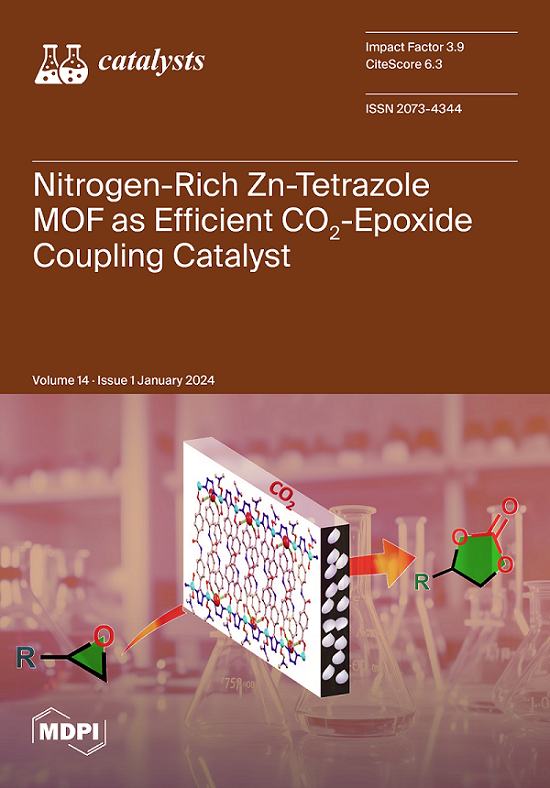Insight into Structural and Physicochemical Properties of ZrO2-SiO2 Monolithic Catalysts with Hierarchical Pore Structure: Effect of Zirconium Precursor
IF 4
3区 化学
Q2 CHEMISTRY, PHYSICAL
引用次数: 0
Abstract
Zirconia–silica monolithic catalysts with hierarchical micro/macroporous structure were obtained in a sol-gel process combined with phase separation using inorganic salts, i.e., oxychloride, oxynitrate and sulphate, as a zirconium source. It was found that the use of zirconium oxychloride and prehydrolysis of tetraethoxysilane (TEOS) resulted in materials characterized by a well-developed continuous structure of macropores with a diameter of ca. 10 μm. For zirconium oxynitrate and sulfate modified materials, the prehydrolysis hardly affected the macropore size. The micropores with a diameter of 1.5 nm in the skeleton of all materials provided a large surface area of 550–590 m2/g. A high dispersion of zirconia in the silica skeleton in all studied materials was shown. However, the largest surface concentration of Lewis and Brönsted acid sites was found in the monolith synthesized with zirconium oxychloride. The monoliths were used as a core for continuous-flow microreactors and high catalytic activity was confirmed in the deacetalization of benzylaldehyde dimethyl acetal. The process was characterized by a high efficiency at low temperature, i.e., 35 °C.洞察具有分层孔结构的 ZrO2-SiO2 整体催化剂的结构和物理化学特性:锆前驱体的影响
使用无机盐(即氧氯化锆、氧硝酸锆和硫酸锆)作为锆源,通过溶胶-凝胶工艺结合相分离,获得了具有分层微/大孔结构的氧化锆-二氧化硅整体催化剂。研究发现,使用氧氯化锆和预水解四乙氧基硅烷(TEOS)可制备出具有发达连续大孔结构的材料,大孔直径约为 10 微米。对于硝酸氧化锆和硫酸锆改性材料,预水解几乎不影响大孔尺寸。所有材料骨架中直径为 1.5 纳米的微孔都提供了 550-590 平方米/克的大表面积。在所有研究材料中,氧化锆在二氧化硅骨架中的分散度都很高。不过,在用氧氯化锆合成的整体石中,路易斯酸和布伦司特酸位点的表面浓度最大。这些整体石被用作连续流微反应器的核心,并在苯甲醛二甲基缩醛的脱乙缩醛过程中被证实具有很高的催化活性。该过程的特点是在低温(35 °C)下效率高。
本文章由计算机程序翻译,如有差异,请以英文原文为准。
求助全文
约1分钟内获得全文
求助全文
来源期刊

Catalysts
CHEMISTRY, PHYSICAL-
CiteScore
6.80
自引率
7.70%
发文量
1330
审稿时长
3 months
期刊介绍:
Catalysts (ISSN 2073-4344) is an international open access journal of catalysts and catalyzed reactions. Catalysts publishes reviews, regular research papers (articles) and short communications. Our aim is to encourage scientists to publish their experimental and theoretical results in as much detail as possible. Therefore, there is no restriction on the length of the papers. The full experimental details must be provided so that the results can be reproduced.
 求助内容:
求助内容: 应助结果提醒方式:
应助结果提醒方式:


